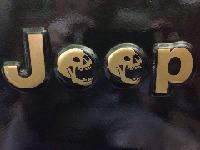Z axis height at end of cut
- snowgoer540
-

- Offline
- Moderator
-

- Posts: 2525
- Thank you received: 857
Not something I had ever thought of. It would require another parameter for thickness in the cut parameters and material file plus another config panel setting for top of highest slat plus a bit of code. It would also need a bit of thought on how to work for existing material files. Looking at it makes me wish I had thought of it in the beginning, it seems to make sense to me. Probing has always been a PITA. It will be interesting to hear comments from others.how complicated would it be to tie the material thickness in with the probe height? Probe height would be the distance from min. height + distance to top of slats + material thickness + tolerance above material.
This would be a pretty intuitive way to set probe heights. What I would picture is probing to find the top of the slats once, and then you just enter the thickness of the material you are cutting (could be pulled from the cut parameters), and then have a value above the material where probing speed starts (which you'd also set once and forget). The probing would vary based on the thickness of the material. And even when you set your float switch travel distance, that would be independent of the whole thing. For safety you could just have it do the whole probe at slow speed from the top.
I'm pretty sure I like it, as if I'm being honest, I just change the probe distance number until it does what I want. I know it's measured from the bottom of travel, but it still isn't intuitive to me. The way I just described would make perfect sense, and honestly you'd only have to set the top of the slats once. You wouldn't have to constantly change it for different thickness materials.
Please Log in or Create an account to join the conversation.
- phillc54
-

- Offline
- Platinum Member
-

- Posts: 5711
- Thank you received: 2093
This idea is good but as Tom pointed out there will be issues with distortion.
Please Log in or Create an account to join the conversation.
- snowgoer540
-

- Offline
- Moderator
-

- Posts: 2525
- Thank you received: 857
Personally I think fast probing is the better option. As long as you have enough float movement then there are no issues with warped/buckled materials. So make sure you have plenty of float movement and set the Probe Height to as low as it goes and set a reasonably low Probe Speed which will be the final probe speed and off you go.
This idea is good but as Tom pointed out there will be issues with distortion.
My float travels < .030" though before the switch trips, so I'm not sure what that does to me in that case.
I was thinking something along the lines of .5" (12.7mm) above the material thickness, I would think distortion would only be a huge issue if you expect to put it to something like .050" (1.27mm).
Please Log in or Create an account to join the conversation.
- rodw
-
 Topic Author
Topic Author
- Offline
- Platinum Member
-

- Posts: 11566
- Thank you received: 3884
Please Log in or Create an account to join the conversation.
- tommylight
-

- Away
- Moderator
-

- Posts: 21083
- Thank you received: 7197
Beat that!
Please Log in or Create an account to join the conversation.
- snowgoer540
-

- Offline
- Moderator
-

- Posts: 2525
- Thank you received: 857
Please Log in or Create an account to join the conversation.
- tommylight
-

- Away
- Moderator
-

- Posts: 21083
- Thank you received: 7197
Please Log in or Create an account to join the conversation.
- tommylight
-

- Away
- Moderator
-

- Posts: 21083
- Thank you received: 7197
Also had 5mm that did not move at all during cutting so i went out for lunch and came back to be greeted by everything finished, but that happened only once, never again.
We get metal from Macedonia, and it is the lowest quality possible, for anything better we have to order from Austria and that is not cheap.
So you wana test the worst case scenarios for plasma cutting, come here, had part of a 4mm plate jump while cutting hitting the torch so hard it removed it from the magnetic holder and threw it 20cm up !
Please Log in or Create an account to join the conversation.
- rodw
-
 Topic Author
Topic Author
- Offline
- Platinum Member
-

- Posts: 11566
- Thank you received: 3884
Sounds like you need at least a metre!
But serious, I would be interested in your opinion.
Please Log in or Create an account to join the conversation.
- tommylight
-

- Away
- Moderator
-

- Posts: 21083
- Thank you received: 7197
The reasoning for this, besides worst mild steel ever, is the ability to cut designs on square tubing without the need to remove the slats from the table.
Please Log in or Create an account to join the conversation.
